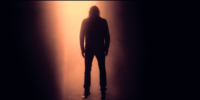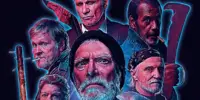Unlike many Final Girls of the time, Nancy Thompson’s path to victory in A Nightmare on Elm Street isn’t about physical endurance, stamina, or luck; it’s all about surviving mind games. After Freddy Kreuger kills everyone she loves, she is left to confront him on his twisted psychological playing field.
“I know the secret now,” Nancy tells Freddy in the film’s climax. “This is just a dream…this whole thing is just a dream.” Freddy lunges to attack her, but, undone by her words, he evaporates into the computer-generated ’80s ether.
Nancy awakens to find that Freddy’s nightmarish spell has been broken. In the final scene of the film, which is shrouded in an iconic fog, everything seems to be looking up. Nancy’s newly alive mother renounces her alcohol dependency, and Nancy reunites with all of her friends, climbing into her boyfriend Glen’s convertible. This reunion doesn’t last long, of course: seconds later, Freddy reappears, attacks Nancy’s mother, and possesses the convertible. After he locks the teens in and speeds away, the viewer can only imagine the eternity of suffering and torture he has in store for them.

In the end, Nancy loses because Freddy Kreuger doesn’t play by the rules. Despite her ability to confront her nightmare head-on, we are left with an ending that underscores the fact that villainy can win despite a hero’s best efforts. But it’s not just the darkness of the ending that makes it so effective; it’s the glimmer of hope we receive right before the final twist. For a few moments, we think Nancy might really survive—all to watch it come crashing down in the end.
This trope, the fake happy ending that plays out right before a devastating twist, is nestled in the third acts of countless horror films. Who could forget Ben’s hard-earned triumph in the ending of Night of the Living Dead that’s cut short when he’s shot in the head by the mob that mistook him for a ghoul? Or the moments of boating bliss Alice enjoys at the end of Friday the 13th seconds before Jason shoots forth from the waters to attack her?
It’s not hard to see what’s at play psychologically when filmmakers use this trope. For many films, especially those more reliant on gimmicks and jump scares to make a lasting impression, it’s one last chance to get the viewer engaged. By building up the possibility of a happy ending, it’s all the more devastating when everything comes crashing down…at least, in theory. As we’ll see, this trope and its offshoots have seen varying degrees of success as they’ve evolved over time.
Though not its first wave of popularity, the fake happy ending was a mainstay of ’70s and ’80s Teen Screams. In fact, a makeup designer who worked on Friday the 13th, Tom Savini, is credited for Jason’s ghastly appearance at the end of the film. He cites the 1976 horror film Carrie, which ends with Carrie’s bloody arm shooting up from her grave, as inspiration. “The whole reason for the cliffhanger at the end was I had just seen Carrie, so we thought that we need a ‘chair jumper’ like that, and I said, ‘Let’s bring in Jason,’” Savini explained to The Daily News.

At the same time, many iconic horror films in the ’70s and ’80s were ending victoriously. The glimmer of hope at the end of The Texas Chainsaw Massacre, when Sally successfully outruns the Leatherface, results in her successful escape even though a number of potential plot twists could have seen her demise. Similarly, Poltergeist ends with the protagonists surviving, and the ending of Fright Night verges on the jovial.
But triumphant endings seem to have grown less and less common over the years, making space for more bleak finales. Because of this, fake happy endings have become the rule rather than the exception.
Two decades after the Nightmare on Elm Street ending shocked theatre viewers, the 2000s saw some variations on the familiar formula. Among the more iconic films that use this trope is the first installment in the Final Destination series. The film’s thesis is clear from the beginning: you can’t outwit or outrun Death. And yet, that’s what protagonist Alex spends the entirety of the film attempting to do, up until the point that he believes he’s reconfigured Death’s design entirely.
This set us up for another unforgettable fake happy ending. In the final scene of the film, Alex and his friends Clear and Carter celebrate their death-defying survival in Paris. But only a short while into their celebration, Alex reveals that he is still concerned for their lives. As if on cue, fate resurfaces to reclaim its debts, taking Carter out in one of the franchise’s most iconic death scenes. It’s almost as though Death delighted in the trio bearing witness to one another’s demises. But at its core, Death adheres to its own rules in collecting the debts it is owed.
While the Final Destination ending is unforgettable, it lacks the crucial element that makes for a successful twist ending: true unpredictability. While Alex and his friends celebrate their survival, viewers know they’re done for before the Parisian guitarist even begins his twangy, cursed rendition of “Rocky Mountain High.” Time and again, death collected its debts, so why wouldn’t it in the finale? And while the final scene remains satisfying, it’s far from unexpected.
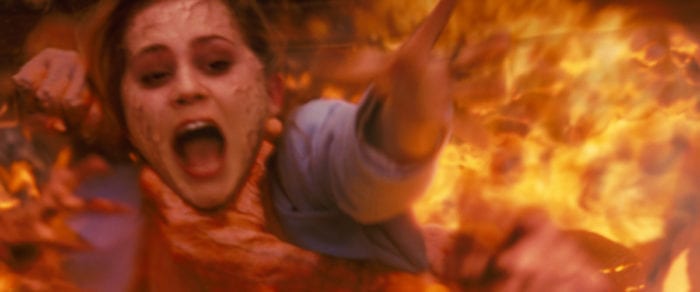
As horror continued to evolve into the 2010s, the fake happy ending trope morphed along with it. The intense and disturbing ending of Drag Me To Hell is an example of a film that uses the trope exceptionally. The film follows Christine Brown after she is damned to hell for insulting an elderly witch named Ganush. To save her soul, Christine learns she must rid herself of the cursed button Ganush gave her before she died. In the grotesque final act of the film, Christine digs up Ganush’s body and places an envelope containing the button in her grave, successfully breaking the curse.
Or so it seems. In the last scene, Christine’s fiance Clay nonchalantly hands her an envelope containing the cursed button. As Christine realizes she failed to break free from her damnation, she backs off of a subway platform in shock and falls onto the rails. But before the train hits her, demonic arms burst forth from the ground and drag her to hell in a devastatingly succinct ending. Unlike Alex and his friends, who relied on luck to outwit death, Christine is a proactive character that does everything in her power to save herself. Much like Nancy, she does nearly everything right and still loses. Up until the last second of the film, we have no reason to expect it.
This isn’t the only modern film that has successfully tried its hand at the fake happy ending in horror. In many cases, the glimmer of hope is revealed to be nothing more than a hallucination—a variation that was memorably played out in The Descent. But the different versions of this movie show that some filmmakers find it too cruel to lift their viewers’ hopes simply to smash them down.
In the US cut of the film, Sarah, the only survivor of a spawn of humanoid creatures that attack a group of spelunking women, makes it out of the cave to her car. In the last scene, she sees the ghost of her friend Juno in her passenger seat, and the film ends with her blood-curdling scream. Not exactly a happy ending, but at least Sarah survives.
But in the UK cut, there’s another scene that adds a much more bleak tone to the ending. The same sequence of events is followed by Sarah waking up in the cave again, revealing her escape to be a hallucination. She goes on to hallucinate that she’s celebrating her young daughter’s birthday. But when the camera pans out, we can see the hellspawn creatures closing in on her again, and it becomes clear that the only hope for escape Sarah has is in her mind.
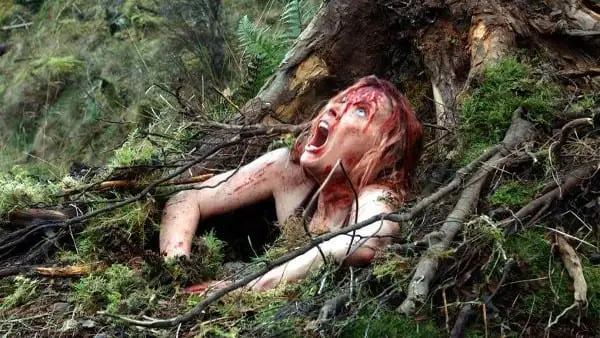
The UK cut of the film was reportedly deemed to be too dark for US viewers, despite it being thematically similar to the Nightmare on Elm Street ending. In addition to the dream-like elements, both endings are effective because they end with the nihilistic viewpoint that cruel and evil forces win no matter how hard a hero fights to topple them.
With how many examples there are of this trope, it’s no wonder many critics feel that it’s lost its punch. It’s safe to say that an oversaturation of this device has hastened the decline of its efficacy. After all, it’s hard for viewers to fall for fake happy endings when they know the odds are it’ll be ripped away in seconds.
But as we turn the corner into a new era of horror, some films are memorably subverting this trope. 2017’s Happy Death Day turns the formula inside out after protagonist Tree escapes reliving the same day of being hunted and murdered over and over. By the end, she and her love interest Carter manage to break her free from the cycle, only for Tree to wake up in the same room, in the same outfit, to the same ringtone alarm as she did on the cursed day. That’s when Carter reveals he was pranking her, and the film shifts from a dark ending to a lighter, comedic one—the direct inverse of the way the trope normally plays out.
Then there are films that blur the lines between the classic rendition of this trope and its inverse. It Follows walks this line in its much-debated ending: after Jay and Paul attempt to kill the sexually transmitted, slow-stalking demon, Paul is seen driving past sex workers, implying that he passes the demon off to one of them. But in the last shot of the film, the two are followed again by a figure in the distance.
This, of course, implies that the two weren’t actually successful in ridding themselves of the demon…if you decide to read the film that way. But it’s clear the ending is meant to be ambiguous—maybe the figure in the background was just a neighbor who happened to be walking in the same direction?—so the film can productively straddle the line.
There’s a similar move at the end of Saint Maude, which follows a devout young woman who believes she is receiving messages from God. In the end, Maud sacrifices herself to her nefarious lord, dousing herself in gasoline in public. Upon clicking her lighter, she spouts radiant wings of light, and all the witnesses around her drop to their knees to praise her as she ascends to a heavenly state.
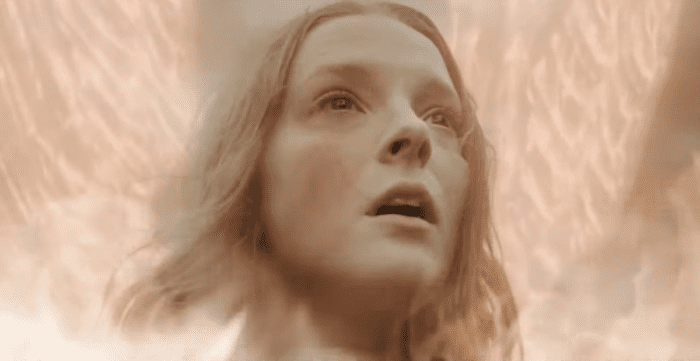
The peaceful scene is punctuated with a short but heavy dose of reality: Maud releases blood-curdling shrieks of pain as she dies from self-immolation. Although it’s much less cryptic an ending than It Follows, it remains successful through emotional ambiguity. Though viewers likely don’t believe Maud is transcending in the end, the juxtaposition between her lengthy angelic fantasy and the short clip of her hellish pain packs an unforgettable amount of emotional punch within seconds right before the movie ends.
At the same time, the saturation of bleak twist endings also serves to make horror films with genuinely triumphant endings even bolder, which may explain why they seem to be on the rise. Films where the protagonist makes it out unscathed or overcomes their adversary despite immense peril, such as The Invisible Man, Ready or Not, and Get Out are fortified by their sidestepping of the dour endings that most horror viewers—conditioned not to believe a happy ending on face value—expect.
In fact, it seems that some directors’ feelings on this trope are still wavering; after all, Get Out director Jordan Peele considered a much darker ending for his film. In an alternate ending, the cops pull up on Chris after he escapes his white oppressors. In this version, Peele explains on Another Round, “You know he’s never getting out, if he doesn’t get shot there on the spot.” But Peele ultimately decided against that version, explaining, “It was very clear that the ending needed to transform into something that gives us a hero, that gives us an escape, gives us a positive feeling when we leave this movie.” Of course, it’s important to note that the ending of Get Out had to account for much heavier social issues than many horror films do, and this no doubt factored into Peele’s decision to keep things optimistic.
But despite the success of some films’ triumphant endings, most people aren’t seeking out uplifting, cheerful finales when they put on a horror film. Given the nature of the genre, it’s safe to say that happier endings aren’t where things are headed at large.
For better or worse, the horror genre is one that embraces its tropes and cliches instead of running away from them. Whatever this trope brings us in the future, it’s probably best to avoid getting your hopes up for your favorite protagonist’s survival when there’s still time left on the clock.

